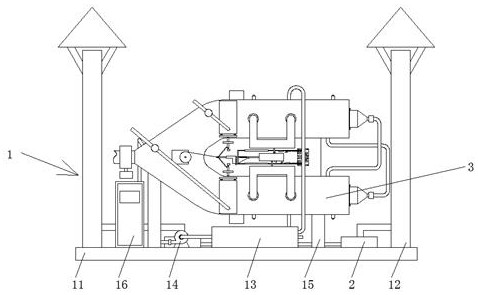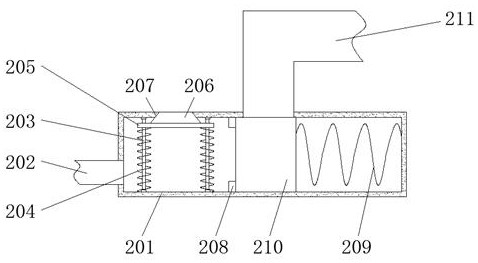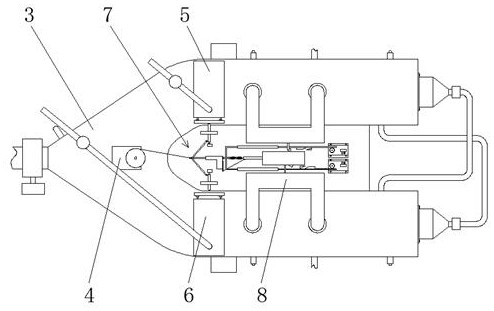Heat accumulating type catalytic combustion device for treatment of volatile organic chemicals (VOCs)
A catalytic combustion and regenerative technology, applied in the direction of combustion methods, combustion types, incinerators, etc., can solve the problems of reducing waste gas treatment efficiency, low degree of automation, and high labor costs, and achieve high efficiency and high degree of automation for VOCs waste gas treatment , the effect of low labor cost
- Summary
- Abstract
- Description
- Claims
- Application Information
AI Technical Summary
Problems solved by technology
Method used
Image
Examples
Embodiment Construction
[0041] The technical solutions in the embodiments of the present invention will be clearly and completely described below in conjunction with the accompanying drawings in the embodiments of the present invention; obviously, the described embodiments are only some embodiments of the present invention; rather than all embodiments. Based on the embodiments of the present invention; all other embodiments obtained by persons of ordinary skill in the art without creative work; all belong to the protection scope of the present invention.
[0042] see Figure 1-19, a regenerative catalytic combustion device for VOCs treatment, comprising a support base 1, a ventilation device 2 and a catalytic combustion device 3 are arranged on the top surface of the support base 1.
[0043] The support base 1 includes a support plate 11, the left and right ends of the top surface of the support plate 11 are fixedly equipped with a chimney 12, the middle part of the top surface of the support plate 1...
PUM
 Login to View More
Login to View More Abstract
Description
Claims
Application Information
 Login to View More
Login to View More - R&D
- Intellectual Property
- Life Sciences
- Materials
- Tech Scout
- Unparalleled Data Quality
- Higher Quality Content
- 60% Fewer Hallucinations
Browse by: Latest US Patents, China's latest patents, Technical Efficacy Thesaurus, Application Domain, Technology Topic, Popular Technical Reports.
© 2025 PatSnap. All rights reserved.Legal|Privacy policy|Modern Slavery Act Transparency Statement|Sitemap|About US| Contact US: help@patsnap.com



